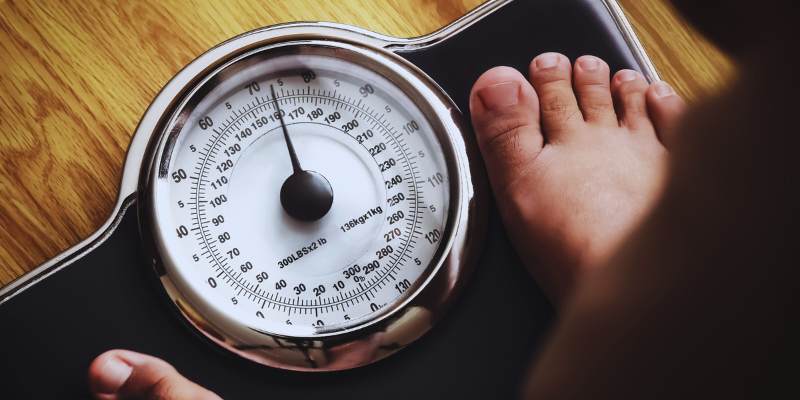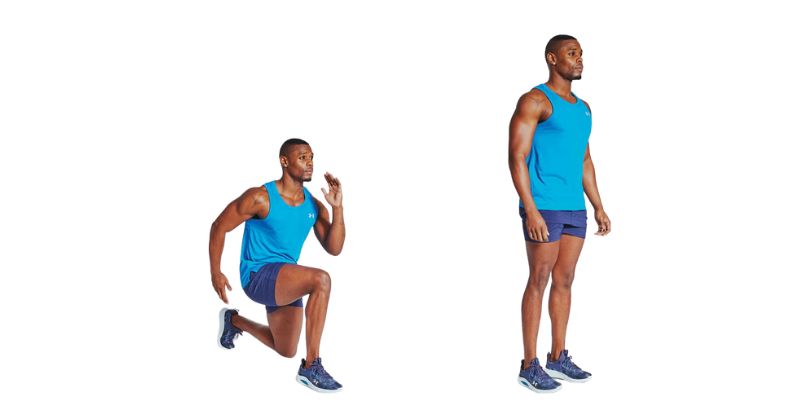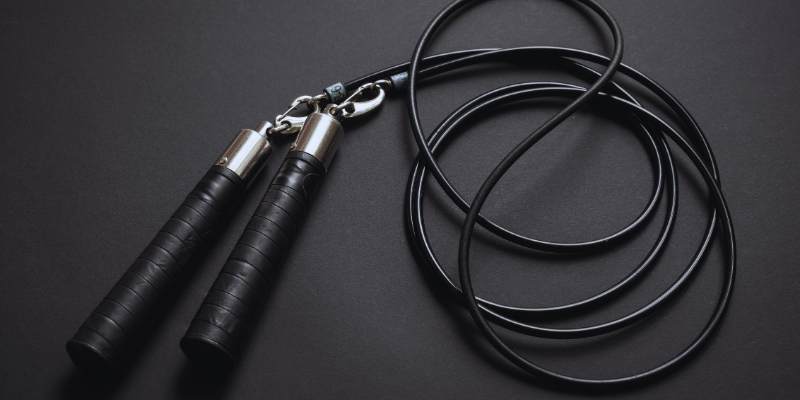Lunges are among the best exercises for toning your glutes and legs. They strengthen your backside, help your thighs shape themselves, and increase your balance. Lunges are a terrific option if you want slimmer legs. However, repeating the same move each time can feel monotonous. Lunge variants are so quite beneficial. These variations target your muscles differently and make your workout more enjoyable.
You need room and the correct form; you do not need sophisticated tools. These five lunge variants will aid regardless of your level of expertise. Each one activates your muscles from different angles. You will feel more powerful, move better, and see changes in your legs. In this article, we'll guide you through each move step by step.
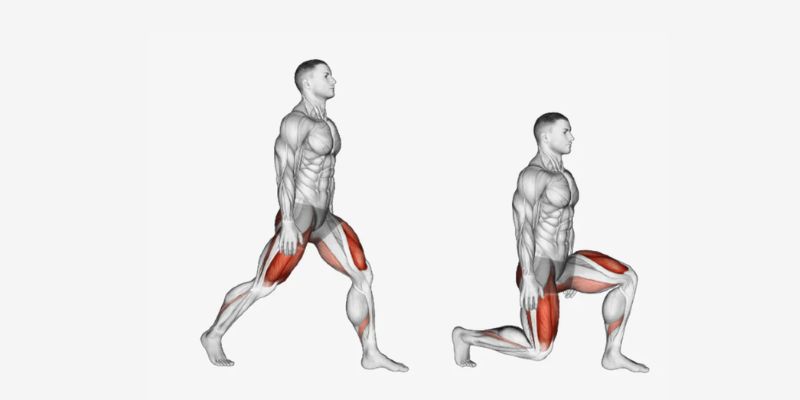
5 Lunge Variations for Leaner Legs
Below are five effective lunge variations to tone your legs and strengthen your lower body.
Forward Lunge
The forward lunge is the classic version most people know. It targets your quads, hamstrings, and glutes, builds strength and balance, and helps shape your thighs and firm your glutes.
How to do it:
- Stand straight with feet hip-width apart and rest your hands on your hips.
- Step forward with your right foot about two feet ahead.
- Bend both knees to form two 90-degree angles.
- Keep your chest lifted and core tight.
- Push through your front heel to return to standing.
- Repeat on the left side.
Tips:
- Don't let your front knee go past your toes.
- Keep your back straight and shoulders relaxed.
Reverse Lunge
The reverse lunge is easier on your knees and works your legs and glutes. Reverse lunges are gentler on your joints. They work your glutes and thighs without too much strain.
How to do it:
- Position your feet shoulder-width apart and let your arms hang naturally by your sides.
- Step back with your right foot.
- Bend both knees until your front thigh is level with the floor.
- Keep your weight mostly on your front heel.
- Return to the start and repeat with the left leg.
Tips:
- Move slowly to maintain proper balance.
- Lift your chest and make sure you don't lean forward.
Side Lunge
Side lunges target your inner thighs, outer hips, and glutes. They also improve flexibility. Side lunges help shape both your inner and outer thighs. They also strengthen the hips and improve stability.
How to do it:
- Stand tall with feet together and hands on hips.
- Step your right foot out wide to the side.
- Lower your right knee while shifting your hips backward.
- Extend your left leg fully with your toes pointing straight ahead.
- Push off your right heel to return to the start.
- Repeat on the left side.
Tips:
- Don't round your back.
- Sit your hips back like sitting in a chair.
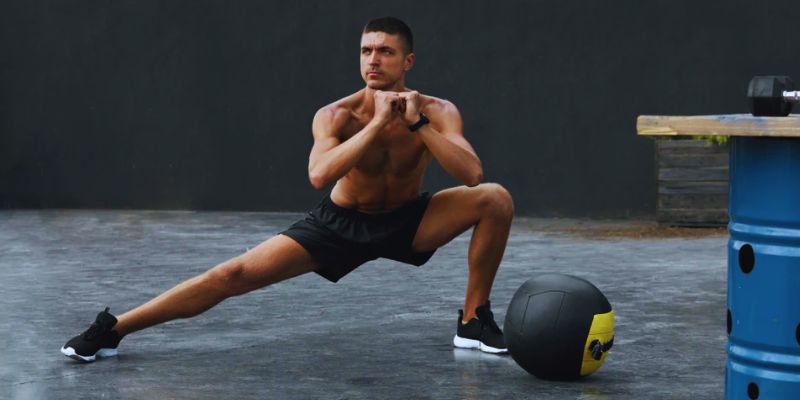
Walking Lunge
Walking lunges are a great way to add movement and cardio to your strength workout. They boost endurance, strength, and balance, working your legs and glutes with every step.
How to do it:
- Stand with feet hip-width apart and hands by your sides.
- Step your right leg ahead and bend your knees to assume a lunge position.
- Push through your heel to bring your left foot forward.
- Step directly into the next lunge with the left foot.
- Continue lunging forward in a straight line.
Tips:
- Hold your torso straight and tighten your abdominal muscles.
- Focus on control, not speed.
Curtsy Lunge
The curtsy lunge targets your glutes and inner thighs while also improving coordination. Curtsy lunges shape your glutes and thighs while helping improve balance and stability.
How to do it:
- Place your feet hip-width apart and rest your hands on your hips while standing.
- Step your right leg behind and across your left leg.
- Bend both knees into a curtsy position.
- Keep your chest up and back straight.
- Return to standing and repeat on the other side.
Tips:
- Keep your front knee aligned with your toes.
- Step wide enough to feel the stretch in your glutes.
Safety and Form Tips
Maintaining correct form during lunges is crucial. It results better and helps you avoid injuries. Use these ideas to keep safe and maximize your workout:
- Always warm up before you start. Dynamic stretches or light cardio help your muscles and joints prepare for exercise.
- Tighten your core throughout every lunge. A strong core supports your spine, and it improves your balance
.
- Do not let your front knee pass your toes. This guards the knee against damage and helps ease its strain.
- Keep your chest raised and straighten your back. Avoid bending forward, as this can strain your lower back.
- Use a mirror to check your form. Seeing your movement keeps you in alignment and facilitates repairs.
- Start gently and give control priority. Once you get stronger, either add light weights or increase your repetitions.
Adding Lunges to Your Routine
Lunges are easy to include in any exercise program and require little room or equipment. They can be used in warm-ups, strength training, and even cardio sessions. If you're new to lunges, begin with 10 reps per leg using only your body weight. Increase your repetitions or add dumbbells for added challenge as you get stronger. You can also combine lunges in a circuit with other exercises, such as planks, squats, or push-ups.
For the greatest results, try lunges two to three times a week. Mixing several lunge types will help you target all your legs and keep your workouts interesting. For full-body exercise, walking lunges are excellent; side and curtsy lunges assist in defining your inner and outer thighs. If time is limited, five minutes of concentrated lunges can still have an impact.
Conclusion:
Lunges are simple yet effective lower body shaping and strengthening exercises. Adding these five lunge variations to your program targets several leg muscles and increases flexibility and balance. There is diversity to fit your level regardless of your degree of experience. Remember, outcomes and injury avoidance depend on proper form. Maintaining consistency, progressively challenging yourself, and changing your motions will help keep things fresh. Achieving slimmer, toned legs is easy with just a small space and a little time—whether at home or the gym.


